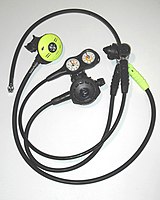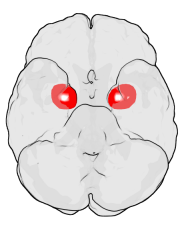
Astragaloside IV attenuates chronic intermittent hypoxia-induced myocardial injury by modulating Ca2+ homeostasis.
Sign Up to like & getrecommendations! Published in 2020 at "Cell biochemistry and function"
DOI: 10.1002/cbf.3538
Abstract: Obstructive sleep apnea syndrome (OSAS) is an important consequence of chronic intermittent hypoxia (CIH). Astragaloside IV (AS-IV) exerts multiple protective effects in diverse diseases. However, whether AS-IV can attenuate CIH-induced myocardial injury is unclear. In… read more here.
Keywords: induced myocardial; myocardial injury; cih; intermittent hypoxia ... See more keywords

Impact of histaminergic H3 receptor antagonist on hypoglossal nucleus in chronic intermittent hypoxia conditions
Sign Up to like & getrecommendations! Published in 2020 at "Psychopharmacology"
DOI: 10.1007/s00213-020-05663-0
Abstract: Rationale The hypoglossal nucleus (HN) controls the movement of the genioglossus (GG) muscle whose dysfunction leads to airway occlusion and occurrence of obstructive sleep apnea (OSA). Histamine produced by the tuberomammillary nucleus (TMN) has a… read more here.
Keywords: hypoglossal nucleus; histamine; activity; intermittent hypoxia ... See more keywords

Toll-like receptor-4 deficiency alleviates chronic intermittent hypoxia-induced renal injury, inflammation, and fibrosis
Sign Up to like & getrecommendations! Published in 2018 at "Sleep and Breathing"
DOI: 10.1007/s11325-018-1704-9
Abstract: BackgroundObstructive sleep apnea (OSA)-associated chronic kidney disease is mainly caused by chronic intermittent hypoxia (CIH) triggered renal damage. This study aims to investigate the role of toll-like receptor-4 (TLR4) in underlying mechanism involved chronic intermittent… read more here.
Keywords: cih; deficiency; tlr4; injury ... See more keywords

Alpha adrenergic receptor signaling in the hypothalamic paraventricular nucleus is diminished by the chronic intermittent hypoxia model of sleep apnea
Sign Up to like & getrecommendations! Published in 2021 at "Experimental Neurology"
DOI: 10.1016/j.expneurol.2020.113517
Abstract: Chronic intermittent hypoxia (CIH) is a model for obstructive sleep apnea. The paraventricular nucleus (PVN) of the hypothalamus has been suggested to contribute to CIH-induced exaggerated cardiorespiratory reflexes, sympathoexcitation and hypertension. This may occur, in… read more here.
Keywords: cih; paraventricular nucleus; sleep apnea; intermittent hypoxia ... See more keywords

Huperzine A, reduces brain iron overload and alleviates cognitive deficit in mice exposed to chronic intermittent hypoxia.
Sign Up to like & getrecommendations! Published in 2020 at "Life sciences"
DOI: 10.1016/j.lfs.2020.117573
Abstract: Chronic intermittent hypoxia (CIH) is a consequence of obstructive sleep apnea (OSA), which increases reactive oxygen species (ROS) generation, resulting in oxidative damage and neurocognitive impairment. This study was designed to determine whether abnormal iron… read more here.
Keywords: overload; hua; mice; iron ... See more keywords

A rapid juvenile murine model of nonalcoholic steatohepatitis (NASH): Chronic intermittent hypoxia exacerbates Western diet-induced NASH.
Sign Up to like & getrecommendations! Published in 2021 at "Life sciences"
DOI: 10.1016/j.lfs.2021.119403
Abstract: AIMS Many dietary NASH models require a long duration to establish (4-6 months). Chronic intermittent hypoxia (CIH), a cardinal hallmark of obstructive sleep apnea (OSA), may accelerate the progression of pediatric nonalcoholic fatty liver disease (NAFLD).… read more here.
Keywords: rapid juvenile; diet induced; model; nash ... See more keywords

Interaction of chronic intermittent ethanol and repeated stress on structural and functional plasticity in the mouse medial prefrontal cortex
Sign Up to like & getrecommendations! Published in 2021 at "Neuropharmacology"
DOI: 10.1016/j.neuropharm.2020.108396
Abstract: Stress is a risk factor that plays a considerable role in the development and maintenance of alcohol (ethanol) abuse and relapse. Preclinical studies examining ethanol-stress interactions have demonstrated elevated ethanol drinking, cognitive deficits, and negative… read more here.
Keywords: cortex; stress; ethanol; plasticity ... See more keywords

Chronic Intermittent Ethanol Exposure Modulation of Glutamatergic Neurotransmission in Rat Lateral/Basolateral Amygdala is Duration-, Input-, and Sex-Dependent
Sign Up to like & getrecommendations! Published in 2018 at "Neuroscience"
DOI: 10.1016/j.neuroscience.2017.12.005
Abstract: The basolateral amygdala (BLA) controls numerous behaviors, like anxiety and reward seeking, via the activity of glutamatergic principal neurons. These BLA neurons receive excitatory inputs primarily via two major anatomical pathways - the external capsule… read more here.
Keywords: anxiety; exposure; basolateral amygdala; intermittent ethanol ... See more keywords

Chronic Intermittent Ethanol Exposure Alters Behavioral Flexibility in Aged Rats Compared to Adult Rats and Modifies Protein and Protein Pathways Related to Alzheimer’s Disease
Sign Up to like & getrecommendations! Published in 2022 at "ACS Omega"
DOI: 10.1021/acsomega.2c04528
Abstract: Repeated excessive alcohol consumption increases the risk of developing cognitive decline and dementia. Hazardous drinking among older adults further increases such vulnerabilities. To investigate whether alcohol induces cognitive deficits in older adults, we performed a… read more here.
Keywords: ethanol exposure; chronic intermittent; adult; behavioral flexibility ... See more keywords

Banxia-Houpu decoction diminishes iron toxicity damage in heart induced by chronic intermittent hypoxia
Sign Up to like & getrecommendations! Published in 2022 at "Pharmaceutical Biology"
DOI: 10.1080/13880209.2022.2043392
Abstract: Abstract Context Obstructive sleep apnoea (OSA) causes chronic intermittent hypoxia (CIH), which results in mitochondrial dysfunction and generates reactive oxygen species (ROS) in the heart. Excessive free iron could accelerate oxidative damage, which may be… read more here.
Keywords: chronic intermittent; damage; iron; bhd ... See more keywords

Chronic intermittent hypoxia promotes the development of experimental non-alcoholic steatohepatitis by modulating Treg/Th17 differentiation
Sign Up to like & getrecommendations! Published in 2018 at "Acta Biochimica et Biophysica Sinica"
DOI: 10.1093/abbs/gmy131
Abstract: The present study aims to characterize the effect of chronic intermittent hypoxia and HIF1α on the non-alcoholic steatohepatitis (NASH) process in mice, and to explore the role of the Treg/Th17 balance in the formation of… read more here.
Keywords: treg th17; hif1; intermittent hypoxia; chronic intermittent ... See more keywords